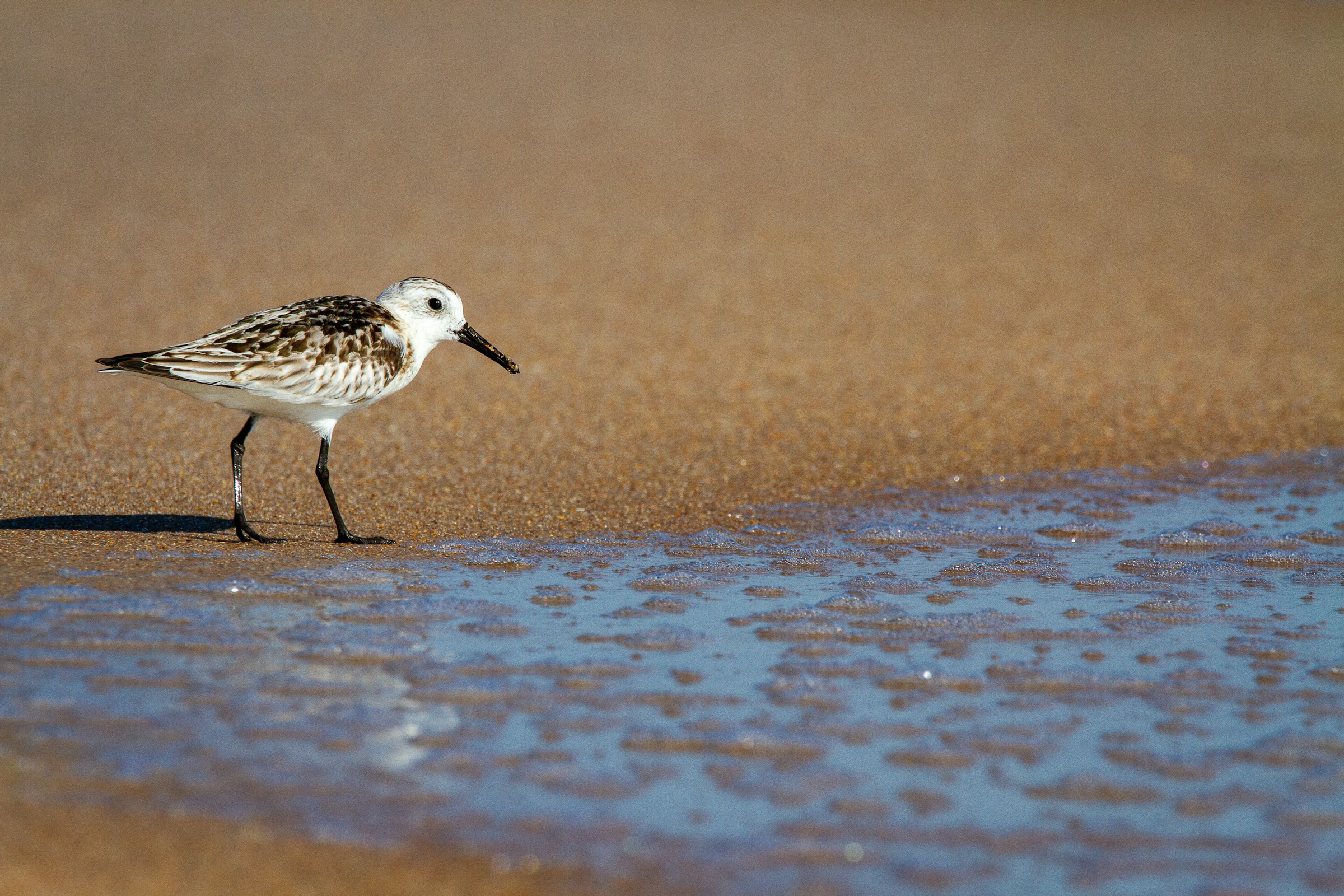As dog walkers enjoy the beauty of the UK’s coastal beaches, it’s essential to be mindful of the delicate ecosystems around them. Nesting sandpipers, with their vulnerable eggs and chicks, require protection from disturbances. This guide provides practical tips to ensure both dogs and wildlife coexist harmoniously. By understanding the impact of our actions on these shorebirds, dog walkers can make informed choices that preserve their habitats while enjoying their time outdoors. Let's explore how small changes can make a significant difference for these beautiful birds.
Importance of Protecting Nesting Sandpipers
Nesting sandpipers are a vital part of coastal ecosystems, contributing significantly to the biodiversity of these areas. These small shorebirds are known for their unique nesting behaviors, which typically occur on coastal beaches. Sandpipers often lay their eggs in shallow scrapes in the sand, a strategy that makes them particularly vulnerable to disturbances.
A lire en complément : Exploring the UK”s Approach to Assessing Air Pollution”s Impact on Bird Habitats in Industrial Areas
Disturbances can have a profound impact on the nesting success of sandpipers. Human activities, such as beachgoers and off-leash pets, can inadvertently destroy nests or cause adult birds to abandon them. This disruption not only affects the current breeding season but can also have long-term effects on sandpiper populations.
To mitigate these threats, there are legal protections in place for nesting birds in the UK. These laws are designed to safeguard nesting sites during critical breeding periods, ensuring that sandpipers can reproduce successfully. Such protections are crucial for maintaining the delicate balance of wildlife protection in coastal regions.
Avez-vous vu cela : Essential Tips for Respectfully Approaching Seal Pups on UK Beaches to Prevent Distress
By understanding and respecting these legal frameworks, individuals can contribute to the preservation of sandpipers and the broader coastal environment. This is a collective responsibility that benefits both the wildlife and the human communities that share these spaces.
Designated Dog Walking Areas
Establishing Designated Areas for dog walking is crucial for the protection of nesting sandpipers. These areas help balance human recreation with Coastal Management efforts aimed at preserving wildlife habitats. By identifying safe zones away from sensitive nesting sites, dog owners can enjoy the coast while minimizing their impact on the environment.
Dog Walking Guidelines play a vital role in this process. Clear and informative signage is essential to ensure dog owners are aware of the designated areas and the importance of adhering to these boundaries. Signs should be strategically placed at entry points and throughout the coastal region to effectively communicate these guidelines.
Collaboration with local authorities is key to the successful implementation of these designated areas. By working together, communities can develop effective strategies that protect sandpipers while accommodating the needs of dog owners. This partnership can lead to the creation of well-maintained paths and facilities that enhance the experience for all visitors.
Ultimately, the establishment of designated dog walking areas is a proactive approach to coastal management. It ensures that both wildlife and human activities can coexist harmoniously, fostering a sustainable environment for future generations.
Leash Requirements and Best Practices
Understanding Dog Leash Laws in coastal regions is essential for both Responsible Dog Ownership and the protection of wildlife like nesting sandpipers. These laws are designed to ensure that dogs remain on a leash in specific areas, particularly where vulnerable wildlife is present. Compliance with these regulations helps prevent disturbances to sensitive ecosystems.
Keeping dogs on a leash offers numerous benefits for wildlife protection. It prevents dogs from inadvertently disturbing or damaging nesting sites, thereby supporting conservation efforts. Additionally, leashes help maintain control over dogs, reducing the risk of encounters with wildlife that could lead to stress or harm for both animals.
For effective management, dog owners should consider Safety Measures such as training their pets to respond to commands. This can be particularly useful in sensitive areas where off-leash activities might be restricted. Training tips include:
- Using positive reinforcement to encourage obedience.
- Practicing recall commands in various environments.
- Gradually introducing distractions to improve focus.
By adhering to leash laws and implementing these best practices, dog owners can enjoy coastal areas responsibly, ensuring the safety and well-being of both their pets and the surrounding wildlife.
Times to Avoid Nesting Sites
Understanding the Nesting Season of sandpipers is crucial for effective Wildlife Awareness and planning a responsible Dog Walking Schedule. In the UK, sandpipers typically nest from late April to early July. During this period, these birds are particularly vulnerable to disturbances, making it essential for dog owners to be mindful of their presence.
To protect these birds, it is advisable to avoid walking dogs near nesting sites during peak nesting times, especially in the early mornings and late evenings when sandpipers are most active. By adjusting your schedule, you can help minimise the risk of disturbing nesting birds.
Here are some strategies for planning walks around nesting periods:
- Research Local Guidelines: Check for any specific restrictions in your area regarding dog walking near nesting sites.
- Flexible Timing: Consider walking your dog during midday hours when sandpipers are less active.
- Alternative Routes: Identify and use paths that are a safe distance from known nesting areas.
By incorporating these strategies into your routine, you contribute to the protection of sandpipers while enjoying the natural beauty of coastal environments. Your efforts support a harmonious coexistence with wildlife.
Educating Dog Owners and the Community
Raising awareness about the importance of protecting nesting birds is crucial for fostering Community Engagement and promoting Responsible Pet Ownership. By educating dog owners and the wider community, we can create a more informed and proactive approach to wildlife conservation.
Wildlife Education can be effectively disseminated through various resources. Leaflets distributed at local parks and coastal areas can provide essential information about the nesting habits of sandpipers and the impact of human activities. Workshops and seminars hosted by conservationists offer interactive platforms for dog owners to learn about best practices in pet management near sensitive habitats.
Engaging local communities in wildlife protection initiatives is vital. Community-led projects, such as beach clean-ups and habitat restoration efforts, not only enhance the environment but also strengthen communal bonds. These initiatives can be supported by local authorities and wildlife organisations, providing a structured framework for residents to contribute positively.
By prioritising Community Engagement and focusing on Wildlife Education, we can ensure that dog owners and local residents are well-equipped to support conservation efforts. This collective responsibility aids in the preservation of sandpipers and their habitats, promoting a sustainable coexistence between humans and wildlife.
Reporting Disturbances and Legal Obligations
Understanding how to manage and report wildlife disturbances is essential for protecting nesting sandpipers. If you witness disturbances, immediately contact local wildlife authorities. This proactive step aids in swift responses, safeguarding these vulnerable birds. Reporting can be done through hotlines or online platforms provided by conservation agencies.
Dog walkers have specific legal responsibilities when it comes to wildlife protection. These obligations include adhering to designated dog walking areas and keeping pets on a leash in sensitive zones. Such regulations are designed to minimise the impact on nesting sites and ensure the safety of both wildlife and pets.
Non-compliance with wildlife protection laws can lead to serious consequences. Penalties may include fines or restrictions on access to certain areas. These legal measures underscore the importance of responsible behaviour in coastal regions. Ensuring adherence not only supports conservation efforts but also fosters a respectful coexistence between humans and wildlife.
By understanding and fulfilling these legal responsibilities, individuals can play a pivotal role in the protection of sandpipers and other coastal wildlife. This collective effort is crucial for maintaining the biodiversity and ecological balance of our precious coastal environments.
Resources and Further Reading
For those eager to deepen their understanding of sandpiper protection, a wealth of Wildlife Resources is available. These resources not only educate but also empower individuals to actively participate in conservation efforts.
Several organisations focus on wildlife conservation and offer Educational Materials to the public. These include detailed guides on the nesting habits of sandpipers and the impact of human activities on coastal ecosystems. By exploring these materials, dog walkers can gain insights into how their actions affect local wildlife and learn best practices for minimising disturbances.
Online Guides are another invaluable tool for those looking to enhance their knowledge. Many conservation websites provide interactive content, such as maps of designated dog walking areas and tips for responsible pet management. These guides often include visual aids like infographics and videos, which can help clarify complex information and make learning more engaging.
For those interested in further reading, consider books and articles that delve into the broader context of wildlife conservation. These texts offer perspectives on the importance of biodiversity and the role of individual actions in preserving natural habitats. Engaging with such resources can inspire a more profound commitment to protecting sandpipers and other coastal wildlife.






